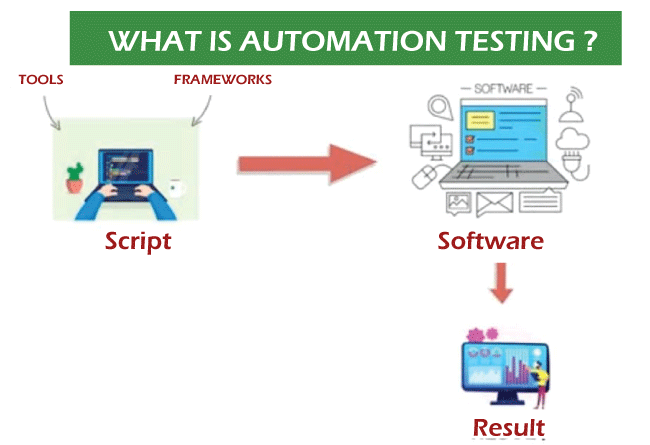Mastering Automation Testing: Tools, Methods, and Benefits
From Manual to Automated Screening: A Comprehensive Guide to Transitioning Efficiently and Efficiently
In the world of software application screening, the shift from handbook to automated processes has actually become a significantly important shift for companies looking for to boost performance and precision in their screening methods. As modern technology proceeds to development, the requirement for effective and smooth computerized screening techniques has actually never been a lot more important. The trip from guidebook to automated screening is not without its obstacles, yet when come close to purposefully and with a clear strategy in mind, the benefits can be substantial - automation testing. In this comprehensive overview, we will certainly explore key actions and factors to consider vital for an effective transition, from the first option of tools to the integration of automation right into existing process. Stay tuned to reveal the insights that will help lead the method for a smoother and much more reliable screening procedure.
Advantages of Automated Checking
Automated testing uses numerous benefits, boosting effectiveness and precision in software advancement procedures. One key benefit is the considerable decrease in testing time. Automated examinations can be run at the same time on numerous devices and operating systems, significantly quickening the testing stage contrasted to manual testing. This boosted efficiency enables faster comments on the top quality of the software, allowing designers to recognize and address problems immediately.
In addition, automated testing guarantees a higher degree of accuracy in identifying issues. Consistency in testing is additionally enhanced, as automated tests implement the exact same steps specifically each time they are run.
Choosing the Right Tools

First of all, examine your goals and demands. Understand the scope of your project, the technologies involved, and the ability collection of your group. This evaluation will help you figure out the functions and abilities you require in your testing tools.
Secondly, consider the compatibility of the devices with your existing processes and systems. Seamless combination with your present software application advancement lifecycle is vital to guarantee a smooth transition to automation.
In addition, review the scalability and versatility of the tools. As your screening needs evolve, the tools ought to be able to adjust and suit modifications effectively.
Last but not least, consider the support and area around the devices. Robust support and an active individual community can give useful resources and aid when executing automated screening. By very carefully considering these elements, you can select the right tools that align with your demands and established the stage for an effective transition to automated screening.
Creating Effective Test Manuscripts

When crafting test manuscripts, it is read the full info here vital to consider the certain requirements of the software program being evaluated and make certain that the scripts resolve all important functionalities. Descriptive and clear calling conventions for examination scripts and examination cases can improve readability and maintainability. Additionally, integrating mistake handling mechanisms within the test manuscripts can assist in recognizing and dealing with problems promptly.
Additionally, organizing examination scripts into modular elements can boost reusability and scalability, decreasing redundancy and improving performance in test manuscript upkeep. Regular reviews and updates to check manuscripts are essential to equal evolving software application demands and capabilities. By following these principles, testers can create reliable and robust test scripts that contribute substantially to the success of automated screening procedures.
Integrating Automation Into Workflows
By seamlessly incorporating automated screening devices like Selenium or Appium right into the software program development lifecycle, groups can accomplish faster comments on code changes, leading to quicker bug discovery and resolution. This assimilation allows for continual testing throughout the advancement procedure, making certain that any kind of issues are determined early on, resulting in greater software quality. Correct assimilation of automation tools needs collaboration in between development, screening, and procedures groups to develop a unified workflow that maximizes effectiveness and efficiency in providing top quality software program products.
Making Sure a Smooth Change
Successfully transitioning to automated screening entails meticulous planning and cautious implementation to make the most of and lessen disturbances performance in the software advancement process - automation testing. To make sure a smooth change, it is important to start by carrying out a detailed assessment of the current testing procedures and identifying areas where automation can bring the most significant benefits. Engaging with all stakeholders at an early stage at the same time, including designers, testers, and job managers, is important for gathering assistance and buy-in for the automation effort
Communication is key during this transition phase. Clear interaction of the objectives, advantages, and assumptions of automated screening assists to manage any resistance or issues that may arise. Additionally, providing appropriate training and sources for staff member to upskill in automation tools and strategies is essential for making certain an effective shift.

Final Thought
Finally, transitioning from guidebook to automated screening offers various benefits, including boosted performance and integrity. By picking the ideal devices, writing effective test scripts, and incorporating automation effortlessly right into workflows, organizations can guarantee a successful and smooth transition. It is vital to accept automation as a useful possession in software application testing processes to improve overall top quality and performance.
In the world of software program screening, the shift from manual to automated processes has actually come to be a progressively crucial shift for organizations looking for to boost effectiveness and accuracy in their testing techniques. Automated examinations can be run at read here the same time on multiple tools and running systems, dramatically speeding up the testing phase contrasted to manual screening. Uniformity in testing is also boosted, as automated examinations perform the same actions precisely each time they are run.To ensure the successful implementation of picked testing devices, the development of effective examination scripts plays a critical duty in verifying the capability and efficiency of automated processes - automation testing. By adhering to these principles, testers can develop reliable and durable test manuscripts that contribute dramatically to the success of automated testing procedures